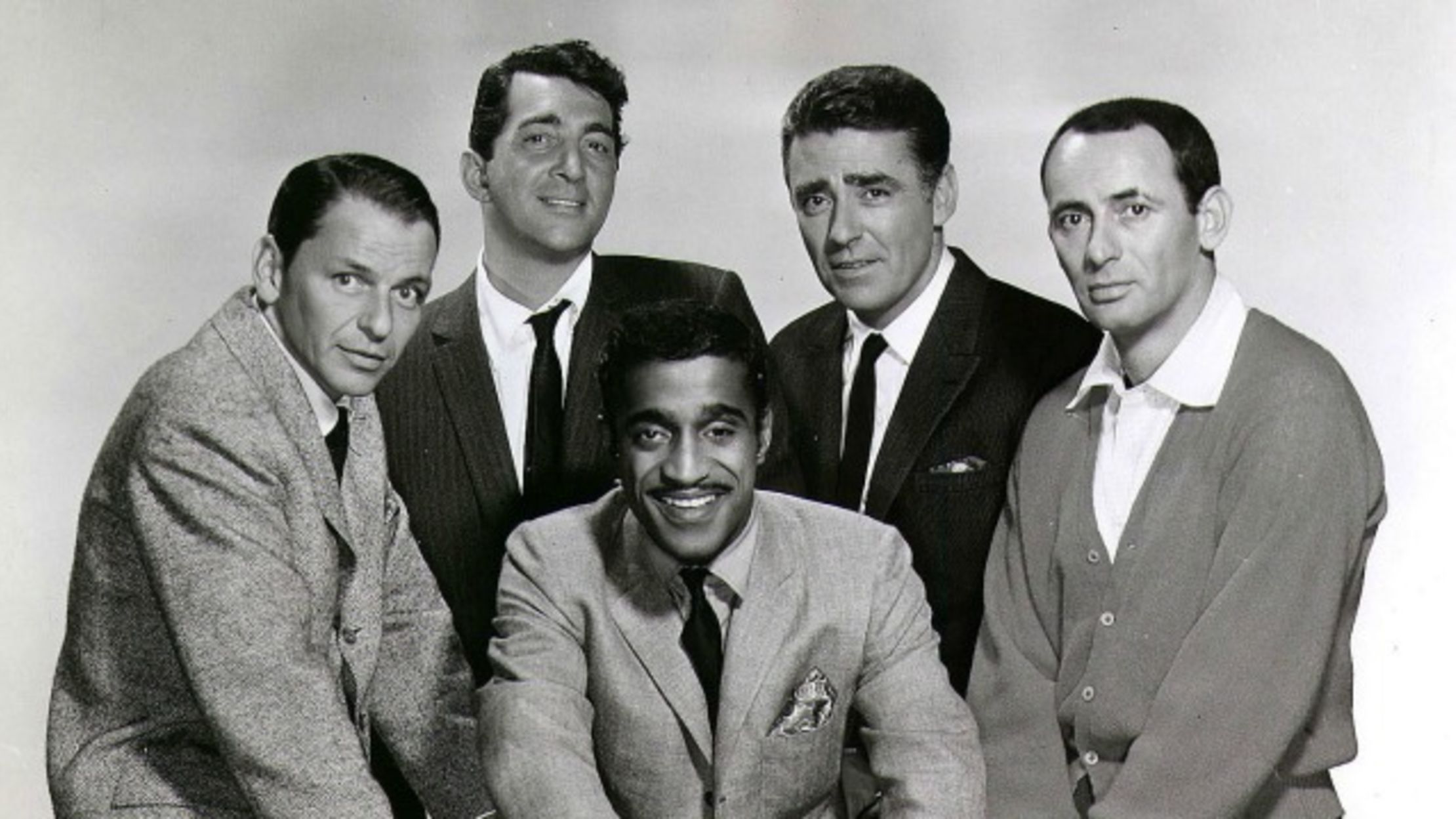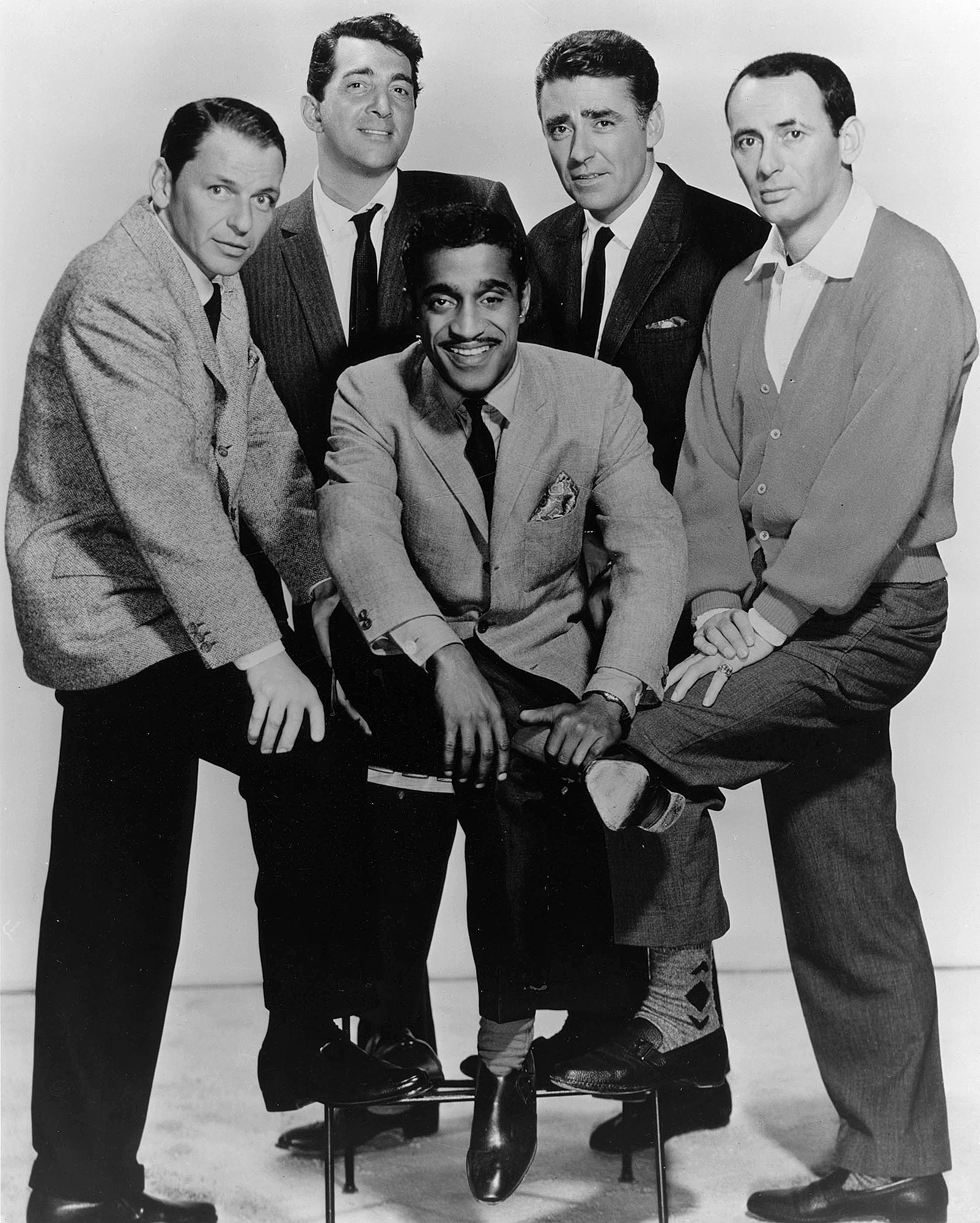The Rat Pack: A Cultural Revolution In Entertainment
The Rat Pack, a name that resonates with the glamour and allure of the 1960s, was not merely a group of entertainers but a cultural phenomenon that left an indelible mark on the entertainment industry. The ensemble, consisting of Frank Sinatra, Dean Martin, Sammy Davis Jr., Peter Lawford, and Joey Bishop, transformed the landscape of music, film, and live performances. Their camaraderie, talent, and influence redefined what it meant to be an entertainer during an era marked by significant social and cultural shifts.
At the heart of the Rat Pack's appeal was their ability to blend individual talents into a cohesive unit that captivated audiences worldwide. Each member brought something unique to the table—Sinatra's smooth vocals, Martin's laid-back charm, Davis's electrifying performances, Lawford's charm, and Bishop's quick wit. Together, they created a synergy that was greater than the sum of its parts. Their performances were more than just shows; they were experiences that transported audiences into a world of sophistication and style. The Rat Pack's influence extended far beyond the confines of the stage, shaping the entertainment industry and society at large.
| Name | Birthdate | Notable Works | Reference Website |
|---|---|---|---|
| Frank Sinatra | December 12, 1915 | My Way, New York, New York, From Here to Eternity | Sinatra.com |
| Dean Martin | June 7, 1917 | That's Amore, The Dean Martin Show | DeanMartin.com |
| Sammy Davis Jr. | December 8, 1925 | Mr. Bojangles, Ocean's 11 | Sammy.com |
| Peter Lawford | September 7, 1923 | Ocean's 11, The Thin Man Goes to Moscow | IMDB.com |
| Joey Bishop | February 3, 1918 | The Joey Bishop Show, Ocean's 11 | IMDB.com |
Frank Sinatra, often regarded as the face of the Rat Pack, was a multifaceted artist whose career began in the 1930s. By the 1940s, he had become a solo star, captivating audiences with hits like "My Way" and "Strangers in the Night." His acting prowess earned him an Academy Award for his role in "From Here to Eternity." Sinatra's influence extended beyond music; he set a benchmark for style and sophistication, becoming a cultural icon.
- Grace Chloe Murdoch Inside Ruperts Family Trust Explained
- Remembering Tony Sirico Funeral And Tributes For The Sopranos Star
Dean Martin, with his signature laid-back charm and velvety voice, was another cornerstone of the Rat Pack. Known for his comedic timing and talent for entertaining, Martin gained fame as part of a duo with Jerry Lewis before establishing a successful solo career. His hit songs, such as "That's Amore," and his role in "The Dean Martin Show" cemented his status as a household name. Martin's ability to blend humor with music made him a beloved figure in American entertainment.
Sammy Davis Jr., a symbol of progress during the civil rights movement, brought a unique blend of singing, dancing, and acting to the Rat Pack. Born into a show business family, Davis's talent was evident from a young age. His electrifying performances and hits like "Mr. Bojangles" made him a standout member of the group. Davis's presence in the Rat Pack was a bold statement, challenging racial barriers and paving the way for greater inclusion in Hollywood. His contributions extended beyond music, as he became a symbol of resilience and progress.
Peter Lawford, an English-American actor, added a touch of elegance and charm to the Rat Pack. Known for his good looks and connections with Hollywood elites, including the Kennedy family, Lawford appeared in several classic films, including "Ocean's 11." While he may not have been as musically inclined as his counterparts, his wit and charisma made him a valuable member of the group. Lawford's presence added a layer of sophistication to the Rat Pack's dynamic, making them more than just a group of entertainers but a cultural force.
- Facts Chart Success Tom Macdonald Ben Shapiros Billboard Run
- Rose Cameron Outer Banks Antagonist Caroline Arapoglous Role
Joey Bishop, a comedian and actor, played a vital role in the Rat Pack's camaraderie and entertainment. Known for his quick wit and humor, Bishop often served as the group's emcee, bringing a light-hearted touch to their performances. His contributions to the Rat Pack's dynamic were invaluable, as he provided a balance of humor and professionalism. Bishop's presence in the group underscored the importance of camaraderie and teamwork in creating a successful ensemble.
The Rat Pack's legacy extends beyond their individual talents; it is a testament to their collective impact on the entertainment industry. Their performances set the standard for future artists, and their style and charisma continue to inspire entertainers today. The group's unique blend of music, comedy, and camaraderie created a template for live performances that is still emulated by artists around the world. The Rat Pack's influence can be seen in countless shows, acts, and tribute performances that pay homage to their legacy.
Las Vegas, a city that owes much of its fame to the Rat Pack, became a premier entertainment destination thanks to their residencies at the Sands Hotel in the 1960s. Their performances brought unprecedented attention to the city, establishing it as a hub for live performances. The Rat Pack's influence on Las Vegas is a testament to their ability to transcend the stage and leave a lasting impact on the cultural landscape. Their legacy continues to inspire the city's entertainment scene, with countless tribute acts and performances paying homage to their pioneering spirit.
The music of the Rat Pack is a timeless blend of jazz, swing, and traditional pop. Each member contributed to the group's musical repertoire, delivering classics that continue to resonate with audiences. Their concerts were more than just performances; they were events that showcased their talent and charisma. The chemistry between the members allowed for spontaneous moments that delighted audiences and showcased their unique talents. These weren't just concerts; they were spectacles, each one a masterclass in entertainment.
Notable songs include "My Way" by Frank Sinatra, "That's Amore" by Dean Martin, and "Mr. Bojangles" by Sammy Davis Jr. Their music was infused with humor and improvisation, making each show a unique experience. The Rat Pack elevated the concert experience, making it an exclusive gathering that audiences eagerly anticipated. Their ability to connect with audiences on a personal level was a testament to their talent and charisma.
The Rat Pack also made significant contributions to film, with several classic movies featuring their ensemble. The most famous of these is "Ocean's 11," released in 1960, which showcased their charm and camaraderie. The film's success cemented their status as Hollywood royalty, allowing them to reach wider audiences beyond their live performances. Other notable films include "Robin and the 7 Hoods" (1964), "Four for Texas" (1963), and "The Rat Pack" (2003), a biographical film about the group. Their on-screen presence further solidified their status as cultural icons, allowing them to leave a lasting impression on the film industry.
The Rat Pack's influence extended beyond entertainment; they became symbols of a lifestyle that epitomized sophistication and charisma. Their style, characterized by sharp suits, slicked-back hair, and a carefree attitude, set trends that are still celebrated today. They represented a certain 'cool' that was aspirational, inspiring generations of artists and audiences alike. This wasn't just about the clothes; it was about an attitude, an approach to life that resonated with audiences worldwide.
Moreover, the Rat Pack's ability to transcend racial barriers in the entertainment industry is a significant aspect of their legacy. Sammy Davis Jr.'s presence in the group challenged the norms of the time, paving the way for greater diversity in Hollywood and beyond. The Rat Pack's impact on civil rights and social change remains a crucial part of their story. It was a powerful statement of solidarity at a time when such statements were desperately needed. Their presence on stage and screen was a testament to the power of unity and collaboration.
The Rat Pack wasn't just a group of entertainers; they were a movement that embodied a specific era. Their music, movies, and unmistakable style are all testament to their enduring legacy. Their story is a reminder that the power of talent, camaraderie, and a shared vision can indeed create a lasting cultural impact. The Rat Pack's influence continues to inspire artists and audiences alike, reminding us of the power of entertainment to shape culture and society.
In the world of entertainment, few groups have left as profound an impact as the Rat Pack. Their ability to blend individual talents into a cohesive unit that captivated audiences worldwide is a testament to their enduring legacy. The Rat Pack's influence extends beyond their music and films; it is a reflection of their ability to shape culture and society. Their story is a reminder that the power of talent, camaraderie, and a shared vision can indeed create a lasting cultural impact. The Rat Pack's legacy continues to inspire artists and audiences alike, reminding us of the power of entertainment to transcend time and space.
- Harold Poole Funeral Service Knightdale Nc Services Info
- Dana Delany Age How Old Is The Actress In 2024

How the Rat Pack Got Its Name Mental Floss

Rat Pack Legends Frank Sinatra, Sammy Davis Jr. and Dean Martin's Kids

How the Rat Pack Got Their Start in Hollywood A History